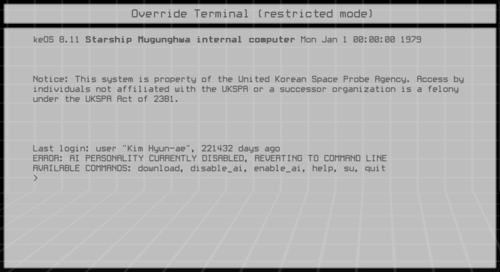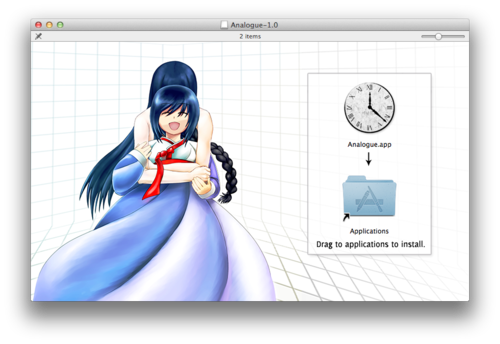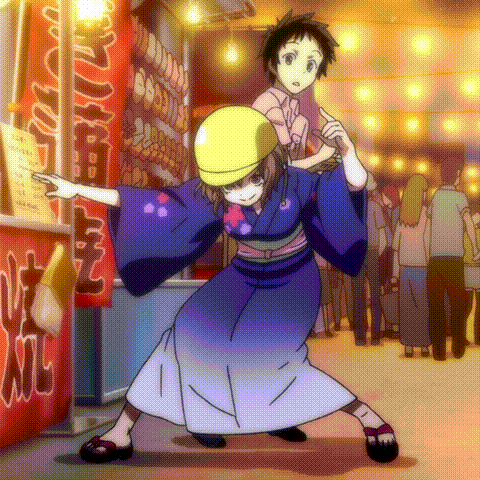Posts from March 2012
A whole slew of new anime previews just came out:
-
Dusk Maiden of
Amnesia
(Tasogare Otome × Amnesia) PV 3. A first glimpse at the
show in motion, so to speak, and it looks all right.
-
Kids on the
Slope
(Sakamichi no Apollon). In case you haven’t heard, YUKI
is doing the opening theme, her first work for anime since
Honey & Clover II.
-
Tsuritama.
Some nice style goin’ on there.
-
There’s no new video for this announcement, but Medaka
Box is reportedly going to run for 45 episodes. Forty-five!
-
And perhaps most unexpectedly,
Robotics;Notes,
the last in the Nitroplus/5pb. visual novel trilogy started by
Chaos;Head and Steins;Gate, has announced
an adaptation – and the game won’t even be released until this
summer! The anime is scheduled to start airing in noitaminA in
October.
I’m trying really, really hard not to set my expectations too high,
but right now I’m failing pretty badly at doing so.

“Why won’t this stupid thing let me tab-complete commands, dammit? It’s
not seriously expecting me to type them all out, is it?”
One of the things I enjoy about Christine Love’s visual novels is that
they expand the interface beyond the usual “click through pages of text
and occasionally make a choice” paradigm. The command line above, for
instance, is the way you first interact with a new game of
Analogue, while the main story itself is explored (with the
assistance of some AI helpers) through a graphical document browser that
can be launched from the initial text-mode shell. Even if what you’re
doing is in some sense essentially the same as with a regular VN –
reading long stretches of words on a screen – it feels like you’re
making some effort to discover the story on your own, rather than having
it just presented to you.
The layering of two different interfaces does an interesting job of both
distancing you from and bringing you further into the game’s plot. On
the one hand, the presence of another environment external to the main
archive reinforces your position as an outsider looking in on the
characters’ past; appropriate, as you play the role of someone sent in
to merely salvage the documents, not read them. On the other, though, it
also makes the game seem more real – this is how you’d actually be
interacting with the story if you were in the player character’s shoes,
remotely interfacing with the computers of a starship floating dead in
space. Analogue even explains why you can only give the AIs
information in the form of binary choices. It’s all impressively thought
out.
I’m also a fan of the
soundtrack,
which plays a big role in setting the atmosphere: isolated,
minimalistic, but not devoid of humanity.
Analogue is, as with Love’s other visual novels, fairly
short; out of the five available endings, I’ve already finished one, and
that in just two and a half hours to boot. I’ll probably come back here
later with more detailed thoughts on the story proper once I’ve tackled
the other four. My initial impressions, though, are already very
positive.

I literally just (as in, within the past hour or so) bought myself a
copy of Analogue: A Hate Story,
Christine Love’s latest visual novel. I loved Digital and
thought don’t take it personally, babe was… well, at least
an admirable effort, insert nervous laugh here, so I figured $15 wasn’t
too much to ask for another round at the table.
Lest you think I’m a total capitalist sell-out, I will note that I
blatantly ignored the instructions you see above and installed it in my
own personal games folder instead of /Applications. Take that,
spiffy-looking disk image background!
More thoughts later when I actually start, you know, playing the game.
Sentence first, verdict afterwards
I thought about writing a long post excoriating Guilty
Crown for having a plot with the strength of wet tissue and
characterization that takes more 180-degree turns than a mountain
highway, but I can’t justify the effort to myself. That’s fine by me,
because I think there’s one image from the final episode’s closing
credits that adequately represents everything wrong with the series:

Hare. She spends the first half of the series, like pretty much all of
the characters, being mostly inconsequential to the plot. She wasn’t
fleshed out nearly enough to make her death have any emotional impact,
but it still catalyzes Shu’s over-the-top change into an unsubtle
tyrant. Then she’s mostly forgotten about until the end of the series,
while Shu goes on and on about Inori having been the only person who was
“there” for him through thick and thin. Her story gets wrapped up with a
single shot of a birthday cake with her name on it, which screams “token
gesture from the writers to reassure you that we didn’t forget about
her, oh no!” The sad thing is that I actually kind of liked her
character. At least she died before she could get dragged through the
mud like Arisa. Yes, let’s go and turn our ineffectual but sympathetic
leader into a star-struck traitor willing to sleep around for
information. That makes total sense.
I was hoping around the midpoint of the series that someone would throw
a real wrench into the story and turn it into something less generic.
After all, Hiroyuki Yoshino did the screenplay for
Mai-HiME, too, and that started off as a mostly
unremarkable show before it pulled off a masterful twist into dark
character drama halfway through. I realize now that I should have been
more specific in my wishes – while Guilty Crown’s second
half certainly isn’t generic, that’s only because it’s its very own
brand of terrible.
(The animation was pretty. I’ll give it that.)

Ryuuko practices her man-to-man defense.
Denpa Onna to Seishun Otoko episode 13, which I finally got
around to watching just yesterday. It’s been a while!
Phusion Passenger and nginx location blocks
Usagi Drop (i.e. still the best anime of 2011) episode 8.5.
Minami-ke Confirmed for Fourth Season
It’s funny how Guilty Crown gets so much better when it
forgets…
Chihayafuru episode 23.
Weekly anime I’m planning to follow this spring:
Medak…
It was cold outside. Bitterly cold, the kind of cold that you d…
@spinor, on type behavior in
JavaScript:
Prototype-based OO…
The Surprisingly Elegant JavaScript Type Model
I’m becoming more and more convinced with every episode of Blac…
Run, Miya, run! Amagami SS+ episode 9.
I sincerely apologize t…
By request of @unyieldingsteel,
Mato’s embarrassed sway from si…
I’m trippin’ balls here, guys. Nostalgia balls.
You have to lo…



